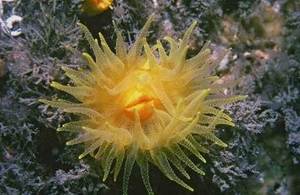Consultation on more Marine Conservation Zones opens
We are inviting people to give us their views on introducing more Marine Conservation Zones

Sunset cup-coral
Everyone with an interest in our seas is invited to give their views on whether 23 sites in English waters should become Marine Conservation Zones.
The 23 sites proposed will cover 10,810 square kilometres of our seas, protecting important seabed habitats and species.
The evidence collected will help us ensure sites with important wildlife, plants or geological features are protected, whilst ensuring long-term economic security for coastal businesses and communities.
Marine Environment Minister George Eustice said:
We’re doing more than ever to protect our seas, preserving incredible underwater landscapes and helping our sea life flourish.
We’ve already created 27 Marine Conservation Zones and a quarter of English inshore waters are in protected areas.
It is important we secure the future of our coastal communities as part of our long-term economic plan. We want to support these communities while protecting our marine life.
We’re asking everyone with an interest in our sea to respond to our consultation so we can create new protected areas and ensure our seas remain healthy and productive for generations to come.
The 23 sites have been proposed with a focus on opportunities to add to the current network of Marine Protected Areas, giving further protection to vulnerable species and habitats in our seas.
They range from Allonby Bay on the Cumbrian coast, which has blue mussel beds and living reefs formed by the honeycomb worm, to a stretch of coast between Bideford and Foreland, home to pink sea fan and anemones.
The designation of the Fulmar offshore site would protect 2400 square kilometres of sandy and muddy habitat in the North Sea. This is inhabited by species including clams, cockles and the brittlestar, a creature which crawls on five slender arms.
This consultation is the second tranche of MCZs. The first saw 27 sites, totalling 9,664 square kilometres, designated as Marine Conservation Zones in November 2013. We aim to designate this second tranche within one year, followed by a third tranche to complete our contribution to an ecologically coherent network of sites in the North East Atlantic.
This is just a part of the work we’re doing to protect and improve our seas. Our Marine Strategy Framework Directive consultation will give everyone the chance to say whether all our planned measures, from MCZs to the ban on throwing dead fish back into the sea, are enough to allow us to achieve Good Environmental Status in our seas by 2020.
Image credit: Copyright Natural England/Roger Mitchell